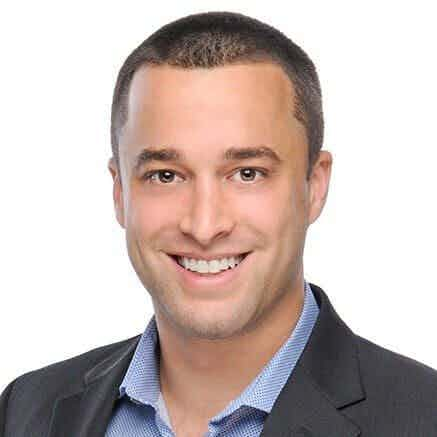Hydrology Expert Witness Withstands Daubert Motion in Groundwater Contamination Case
Updated on
CASE: ABARCA V. FRANKLIN COUNTY WATER DISTRICT 761 F. Supp.2d 1007 (E.D. Cal. 2011)
BACKGROUND:
This lawsuit arose out of a closed cooling tower manufacturing facility (the “BAC site”) that while in operation pressure treated wood and was operated by entities formerly owned by the BAC Defendants (“BAC”). Plaintiffs, current or former residents of residential neighborhoods (“Beachwood”) near the BAC Site, alleged that two contaminants from the BAC Site migrated from the treating area via groundwater, surface water, surface soil, private well, and air pathways to locations where plaintiffs were exposed to them.
Defendants moved for summary judgment on Plaintiffs’ negligence, trespass, nuisance, and wrongful death causes of action. Defendants’ claimed there was no evidence of exposure via any pathway, i.e., groundwater, private domestic wells, surface water, air, or soil. Plaintiffs opposed each facet of Defendants’ motion, arguing that their expert evidence clearly showed that “contaminants from the BAC have historically migrated from the facility via groundwater, surface water, and air pathways to locations where plaintiffs were exposed to them and at levels which could cause harm.”
Expert Witness:
As to these pathways, Plaintiffs supported their burden to show a probable cause between the pathways and exposure with the testimony of Douglas Bartlett, groundwater hydrologist (groundwater modeler), and Camille Sears, meteorologist (air modeler).
Daubert Challenge:
Defendants moved to exclude these expert opinions and testimony pursuant to Federal Rule of Evidence 702 and two United States Supreme Court cases, Daubert v. Merrell Dow Pharms., Inc., 509 U.S. 579 and Kumho Tire 2020 Co. v. Carmichael, 526 U.S. 137 (1999). In particular, Defendants challenged Bartlett and Sears’ expert testimony on grounds that it could not pass Daubert’s “gatekeeping” requirement.
Conclusion:
The qualifications of Plaintiff’s air model expert, Camille Sears, and the reliability of her methodology and assumptions were materially at issue in this case. Sears’ declaration specified she had worked in the air quality field for nearly 30 years, following her graduation from the University of California at Davis (M.S. and B.S. degrees in atmospheric science). Prior to forming her own consulting firm in 1992, Sears worked as a private air consultant/scientist (Dames Moore, URS Consultants) and Air Toxics Program Coordinator (Santa Barbara Air Pollution Control District). Sears had been a testifying expert for twenty years, since 1990, and provided air modeling testimony in California Dept. of Toxic Substances Control v. Interstate Non-Ferrous Corp., No. 97-CV-5016-OWW-LJO, an environmental contamination case involving, among other things, the alleged air dispersion of dioxin-containing ash released from incendiary operations at a smelting site in Mojave, California. This was certainly enough to qualify her as an expert in air pathway exposure.
As for the reliability of her methodology, drawing all inferences in favor of the non-movant, the Court found that Ms. Sears’ testimony presented a scientific dispute not resolvable as a matter of law. Defendants’ Daubert motion was DENIED and that portion seeking to adjudicate air contamination was also DENIED.
The seminal dispute between the parties in regard to the groundwater exposure expert was whether Bartlett properly excluded 46 years of sampling data from the well where the alleged exposure was settling, as well as data from the nearby monitoring wells. The degree of variance between Bartlett’s model and the well data required a factual foundation to decide the truth of Bartlett’s grounds for minimizing most of the observed test data. This credibility determination would bear on the ultimate admissibility of the model. The Court reserved the right to exclude the model after hearing the evidentiary foundation for the model at trial.
Therefore, the BAC Defendants’ Daubert motion was DENIED.
About the author
Jared Firestone, J.D.
Jared Firestone, J.D., is a multi-disciplinary attorney with expertise in a range of legal areas. He founded and operated Firestone Law Firm PA in Hollywood, Florida, and worked as an Associate Attorney at Gustman Law P.C. in New York. His practice areas include Personal Injury, Criminal Defense, Medical Malpractice, Trusts & Wills, Civil and Commercial Litigation, Family Law, Real Estate, and Immigration. Additionally, he has experience in real estate, focusing on residential property in the Miami/Fort Lauderdale areas. Firestone also served as a pro bono Mediator at the Benjamin N. Cardozo School of Law Divorce Mediation Clinic. He holds a J.D. from Cardozo School of Law, where he honed skills in E-Discovery, Divorce Mediation, and Legal Writing, and a Bachelor’s degree in Philosophy from Tulane University.
Subscribe to our newsletter
Join our newsletter to stay up to date on legal news, insights and product updates from Expert Institute.
Sign up nowFind an expert witness near you
What State is your case in?
Subscribe to our newsletter
Join our newsletter to stay up to date on legal news, insights and product updates from Expert Institute.



